Last month the American photographer Joel Meyerowitz captivated visitors to CIMA with a talk on his most recent project, Morandi’s Objects.* Earlier this year, Meyerowitz spent several days in Bologna, Italy, photographing all 270 objects in Morandi’s studio. A selection from this series is on view currently at CIMA in connection with the Giorgio Morandi installation.
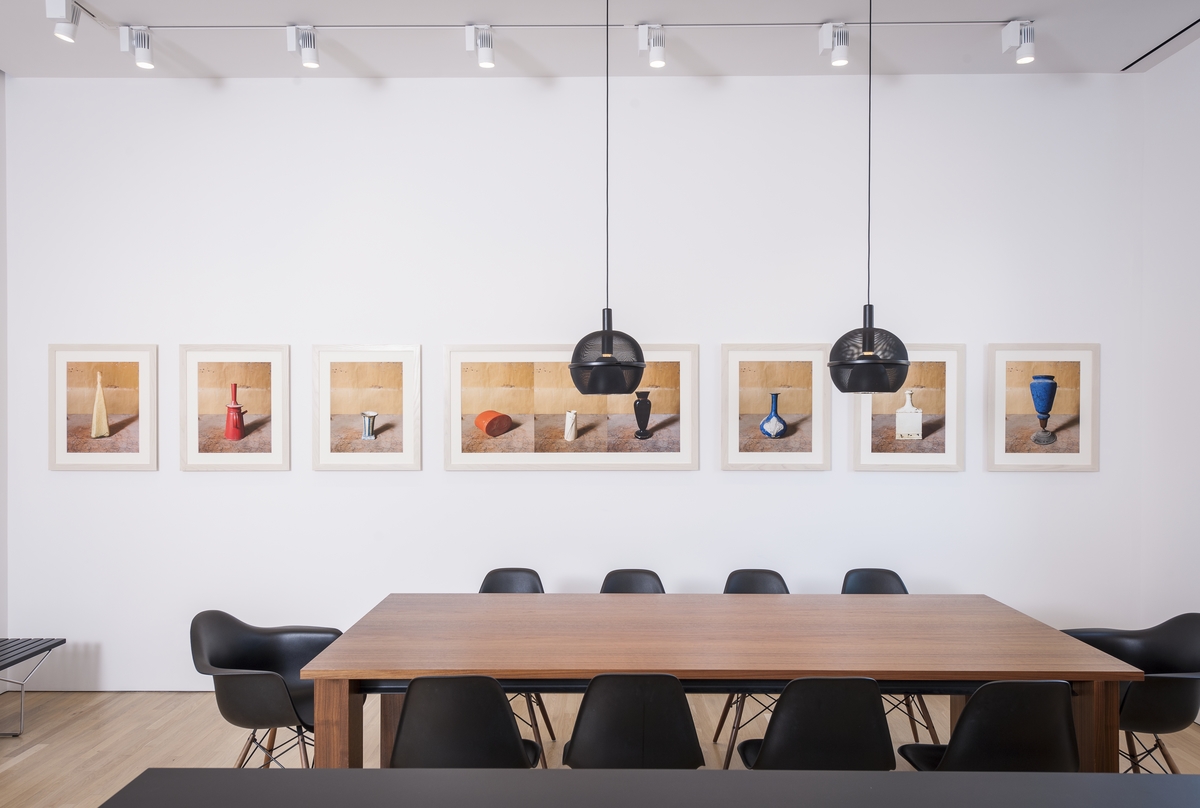
It is a thrill to see the actual objects that Morandi lived with and painted over and over throughout the course of his career. We see for the first time the dust in the studio; we see the way the light falls from the lone window in the studio; we see the marks that the artist made on the table, documenting the compositions he created so meticulously.
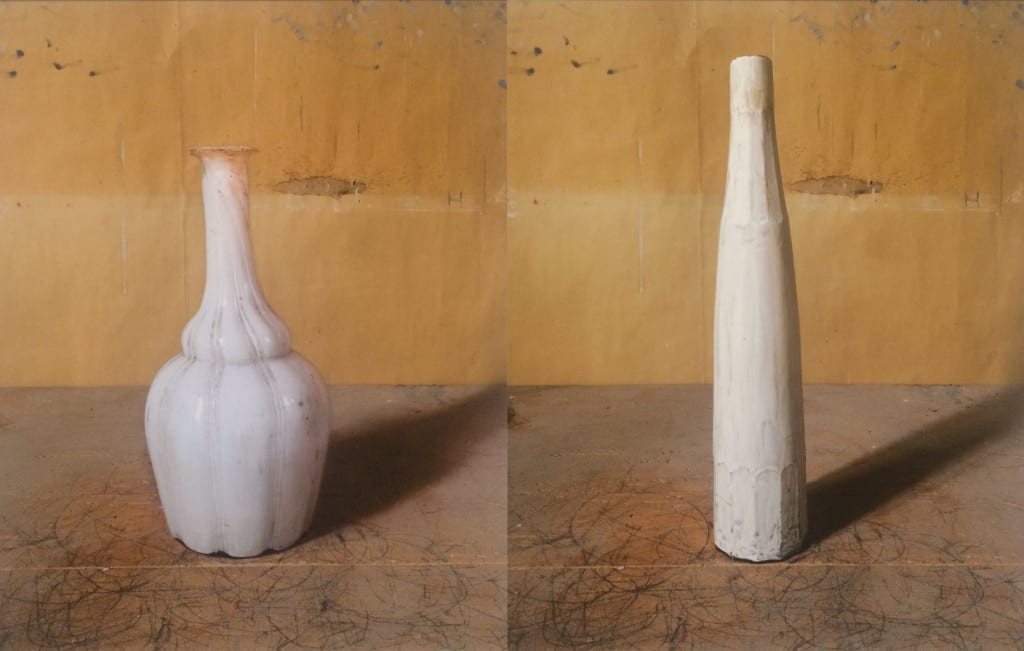
These photographs also reveal how much Morandi transformed the objects themselves, before even beginning to paint them. He poured paint inside them, turning a transparent glass bottle opaque; he painted the outside of them; he even made his own objects, out of paper or blocks of wood. CIMA has one such object on view—one of the only objects not in the studio today. It looks like an oil can, but it has a flat back, no bottom, and no hole at the top. It has no function; it is an invented form, created just to be painted.
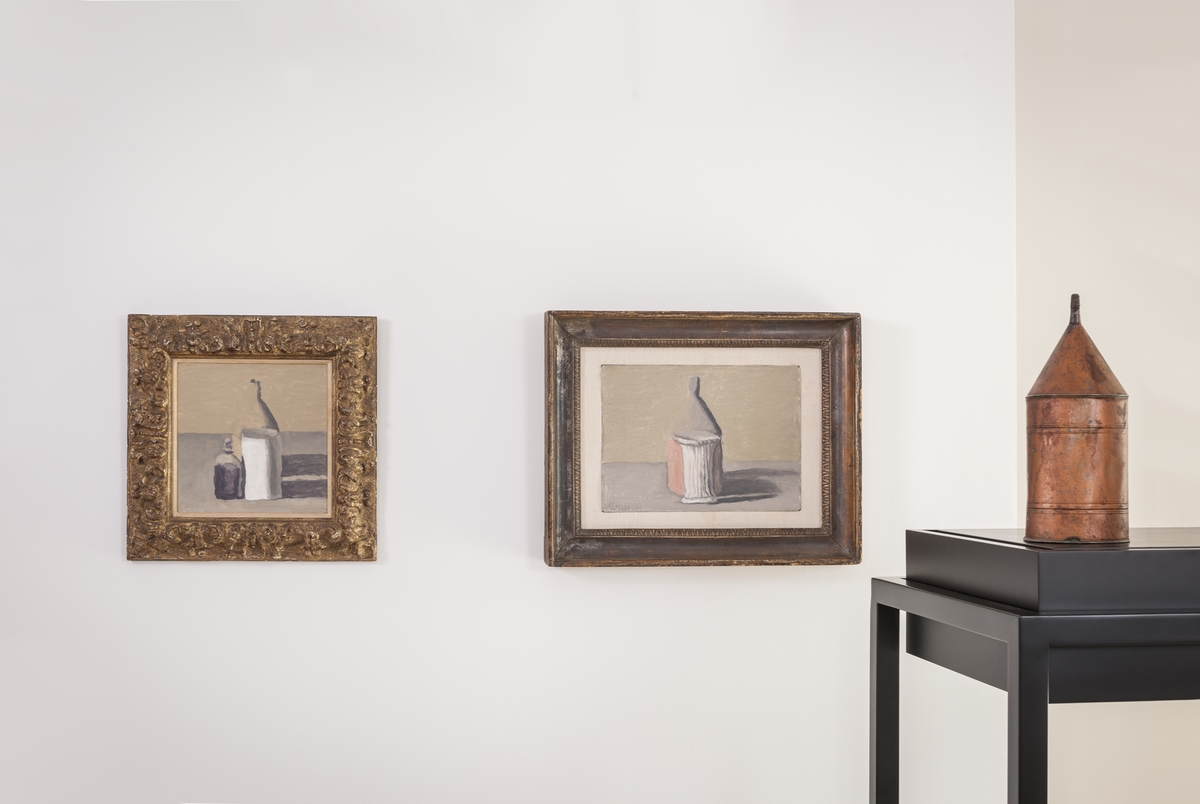
Many of the objects Morandi painted repeatedly over the course of decades. Seeing how differently these objects are painted across a series of Morandi’s works, we gain a new appreciation for the extraordinary tonal variety Morandi explored, his use of light and shadow and scale, and the rich interior worlds that the artist plumbed. Still life for Morandi was a means not to depict reality, but to investigate painting itself and what a painting can be. Humble objects become the vehicle for a rigorous investigation of representation and perception—in each instance entirely new and distinct. At CIMA an antique fluted white glass bottle, designed to contain oil, appears in one of Morandi’s earliest masterpieces, from 1916, and again in a still life of 1955, glistening amidst the dust.
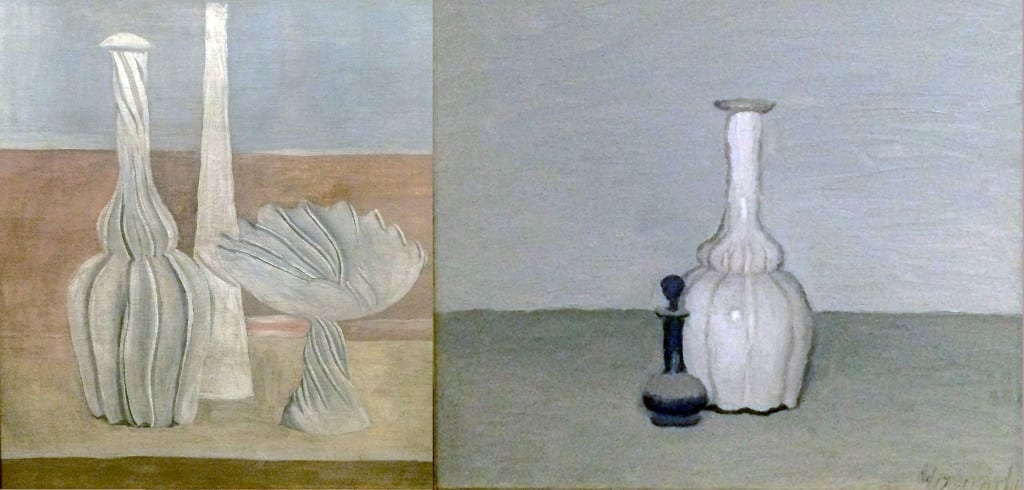
Another object to follow are the yellow Persian bottles. Morandi first painted these in the 1920s, and he continued to paint them until the end of his life, but he never painted them the same way twice, nor did he ever depict the black glyphs that decorate the sides of the bottles.
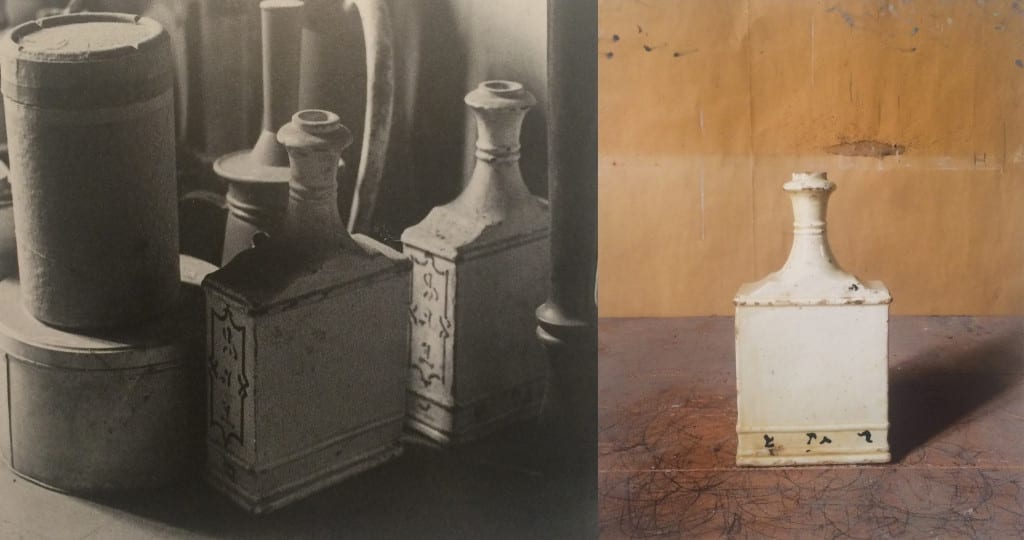
At CIMA we see one of these Persian bottles taking center stage in a still life from 1931; another seemingly cushioned atop an enigmatic white form (a flask, perhaps, on its side) at the edge of a table in a darkly luminous 1941 still life; and, two of them, almost unrecognizable, appearing like abstracted building forms in a still life painted during the last years of Morandi’s life.

For a few more days, you can also seek out the yellow Persian bottle at the David Zwirner Gallery, where there is a beautiful Giorgio Morandi exhibition featuring works primarily from the 1940s and 50s. That show also includes paintings that feature that exquisite white glass bottle. It has become a familiar presence. In 1962 Morandi said to Lamberto Vitali, “A white bottle is all that remains.”

* The publication of Joel Meyerowitz’s Morandi’s Objects is forthcoming from Damiani Editore; the works are also currently on view in Bologna at the publisher’s new gallery space. Keep an eye out for the video of Joel Meyerowitz’s talk at CIMA, which will be posted to our website in the new year. Meyerowitz is represented by the Howard Greenberg Gallery.
